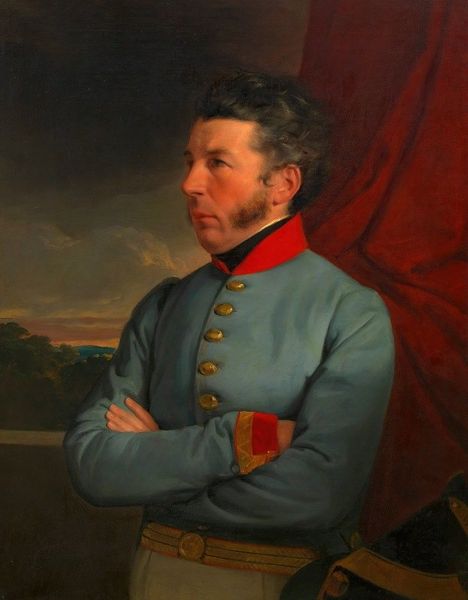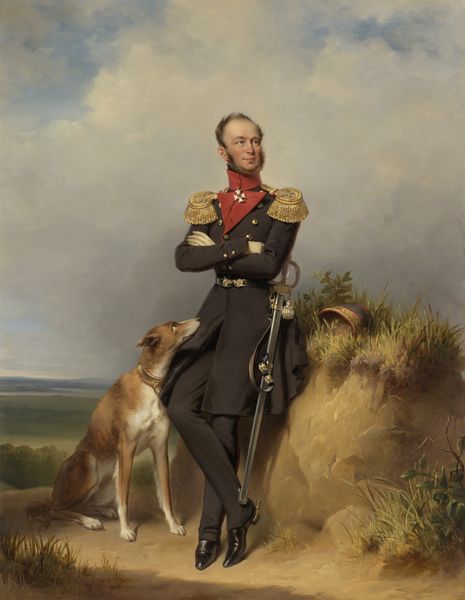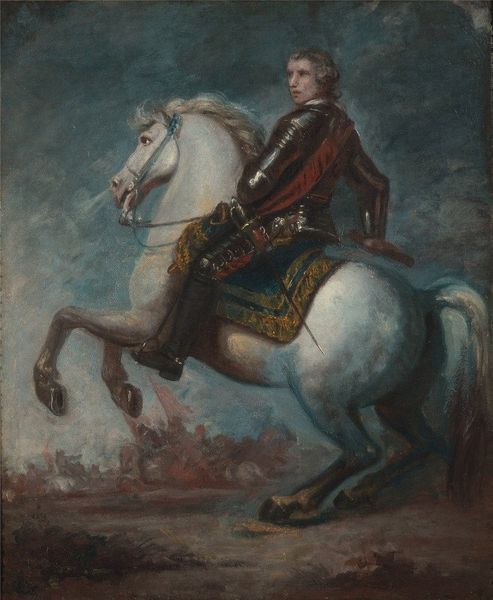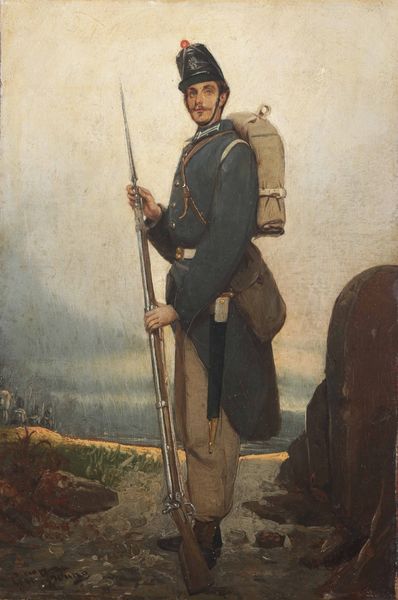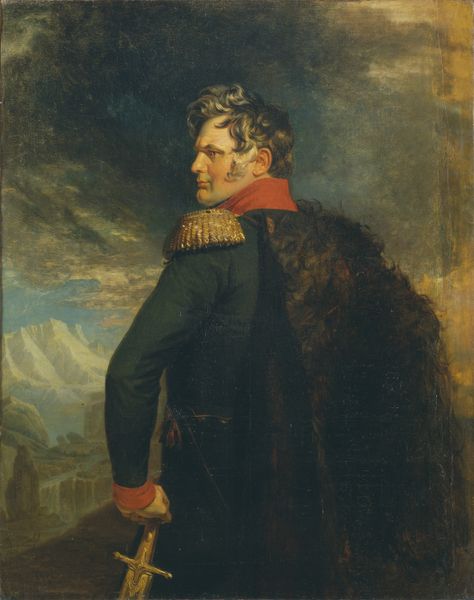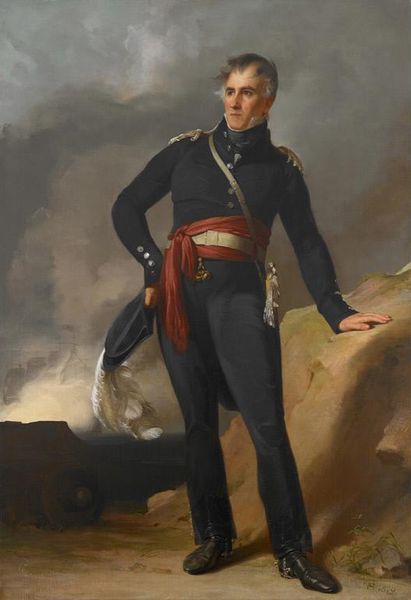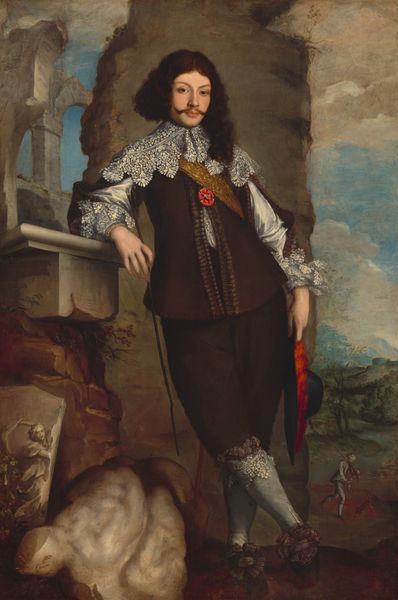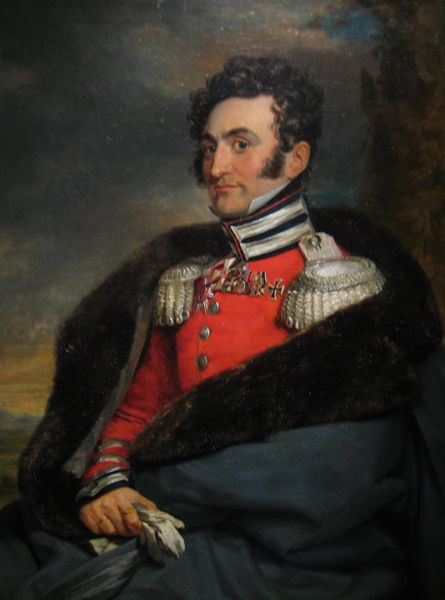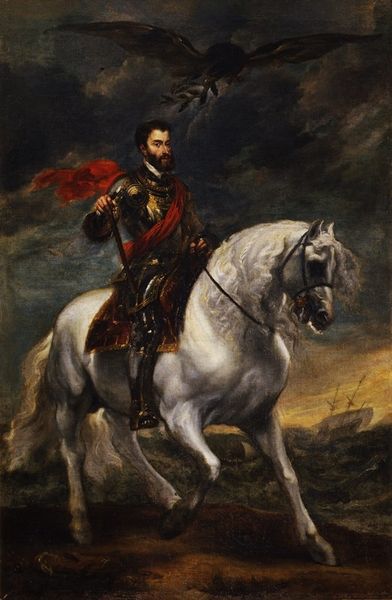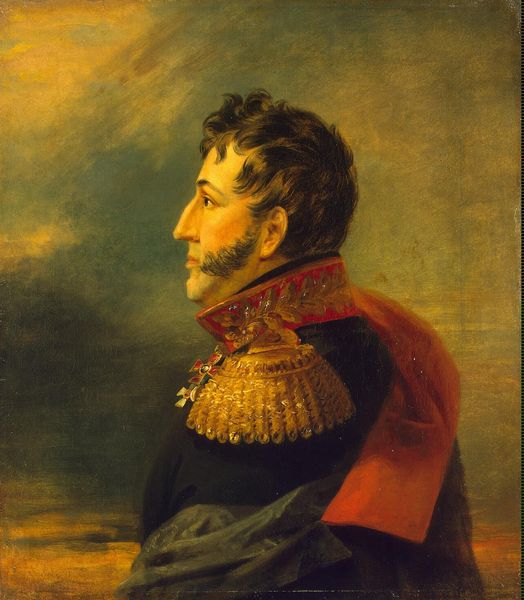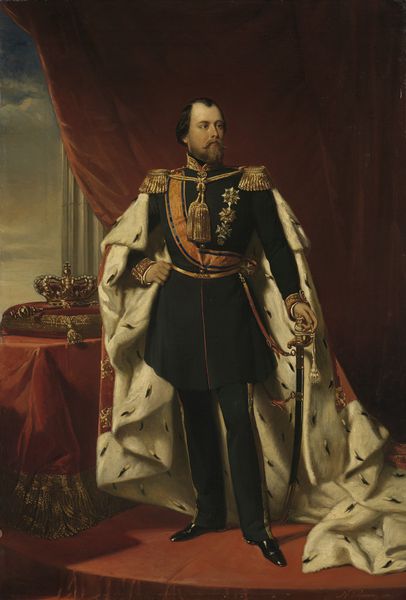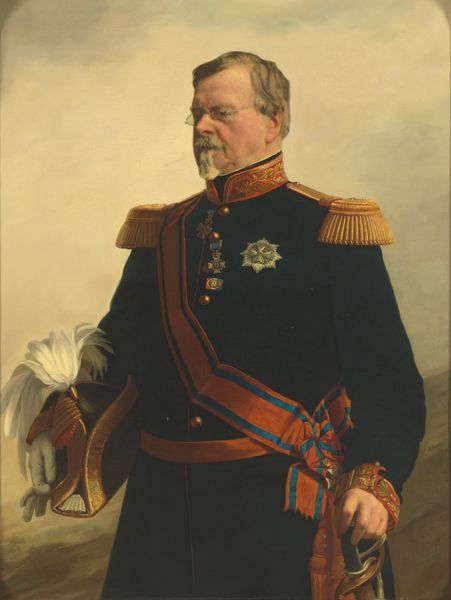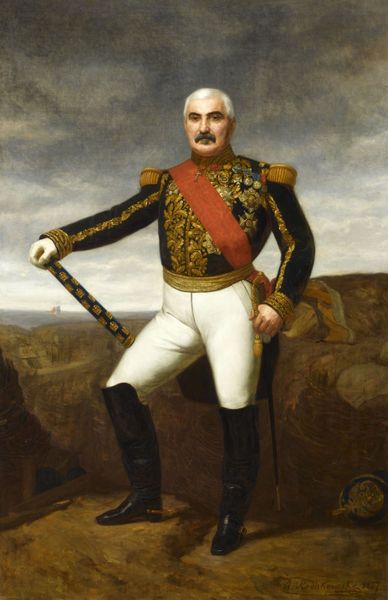
Copyright: Public Domain: Artvee
Curator: Jozef Simmler's 1865 "Portrait of Ludwik Mycielski," executed in oil, commands immediate attention here. The full-length depiction features the subject against a backdrop of indistinct woodland. Editor: My first impression is a potent blend of nobility and melancholy. There’s a distinct romantic aura, a sort of pensive stoicism emanating from Mycielski’s gaze, wouldn’t you agree? The dramatic cloak and the muted colors contribute to this air. Curator: Absolutely. Simmler was a master of Romantic portraiture, imbuing his subjects with an individual and societal weight. Mycielski was from Polish nobility, his attire speaking to this station but also referencing a moment of Polish national aspiration against the backdrop of partition and unrest. Editor: The horse and the attendant visible behind him hint at the military and land-owning identity of the Polish nobility at that time. Given the period, what specific socio-political undertones can we draw from this depiction? Curator: Well, portraits during this era served less as simple likenesses and more as signifiers of social standing and political leaning. Displaying Mycielski, possibly involved in nationalistic circles, signaled defiance against foreign dominance. He's carefully portrayed in a costume mixing traditional elements and markers of social distinction at a historical breaking point. This act reclaims some form of threatened symbolic control and identity in the face of cultural erasure and displacement. Editor: That's a really interesting point. How might a contemporary viewer interpret the piece through the lens of national identity and resistance movements, or more generally through power structures and class consciousness? Curator: Today, we're primed to see the dynamics of representation at play. His positioning against the somber landscape can symbolize resistance and resilience but we should also remain conscious about glorification of certain segments within broader political movements. Thinking of the horse and groom as signs of material privilege within this struggle can lead to necessary conversation, as well. Editor: This has definitely opened up new perspectives for me on this striking artwork. Curator: Agreed. It reminds us that artistic pieces are documents of the artists' era that still can act in conversation with concerns and realities today.
Comments
No comments
Be the first to comment and join the conversation on the ultimate creative platform.

